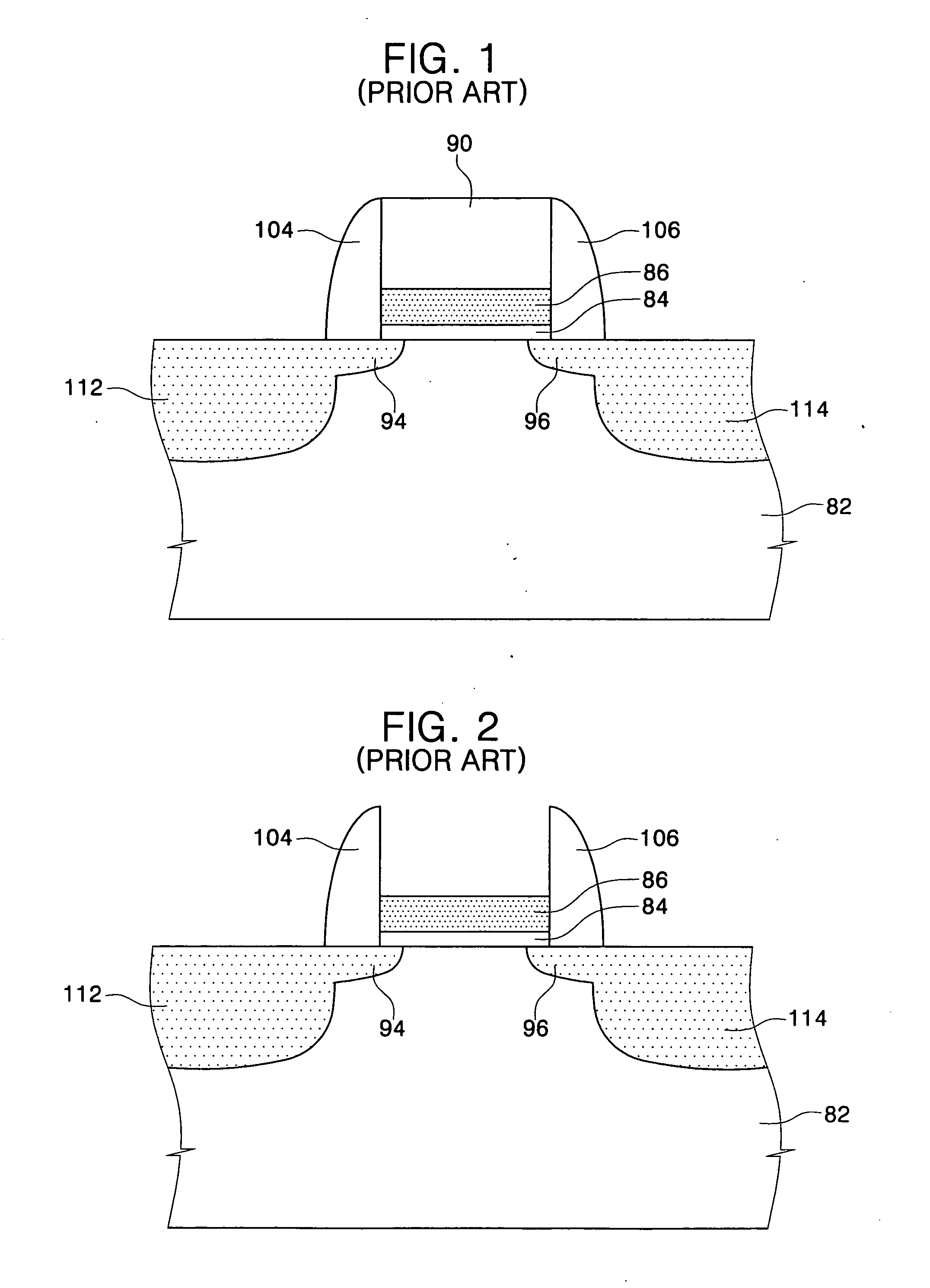Method of forming MOS transistor having fully silicided metal gate electrode
a metal gate electrode and metal oxide technology, applied in the direction of semiconductor devices, basic electric elements, electrical equipment, etc., can solve the problems of reducing the transistor size, affecting the current driving capability of the transistor, and affecting the transmission speed of an electrical signal applied to the gate electrod
- Summary
- Abstract
- Description
- Claims
- Application Information
AI Technical Summary
Benefits of technology
Problems solved by technology
Method used
Image
Examples
Embodiment Construction
[0040]FIG. 3 to FIG. 8 are cross-sectional views illustrating a method of fabricating a MOS transistor having a fully silicided metal gate electrode in accordance with embodiments of the present invention.
[0041] Referring to FIG. 3, an isolation layer 13 is formed in a predetermined region of a semiconductor substrate 11 to define an active region 12. The semiconductor substrate 11 may be a silicon substrate or a silicon-on-insulator (SOI) substrate. Moreover, the semiconductor substrate 11 may be a strained silicon substrate containing germanium (Ge) or carbon (C). A gate insulating layer 17 is formed on the active region 12. A gate conductive layer is formed on the entire surface of the semiconductor substrate having the gate insulating layer 17. The gate conductive layer may be formed of a poly-crystalline semiconductor layer which is doped with N type impurities or P type impurities.
[0042] The gate conductive layer is patterned to form a gate pattern 18 which crosses over the ...
PUM
 Login to View More
Login to View More Abstract
Description
Claims
Application Information
 Login to View More
Login to View More - R&D
- Intellectual Property
- Life Sciences
- Materials
- Tech Scout
- Unparalleled Data Quality
- Higher Quality Content
- 60% Fewer Hallucinations
Browse by: Latest US Patents, China's latest patents, Technical Efficacy Thesaurus, Application Domain, Technology Topic, Popular Technical Reports.
© 2025 PatSnap. All rights reserved.Legal|Privacy policy|Modern Slavery Act Transparency Statement|Sitemap|About US| Contact US: help@patsnap.com



